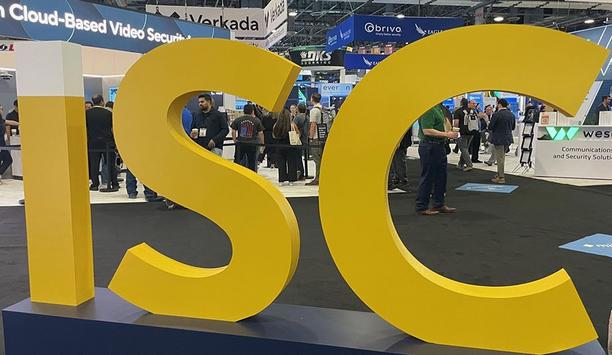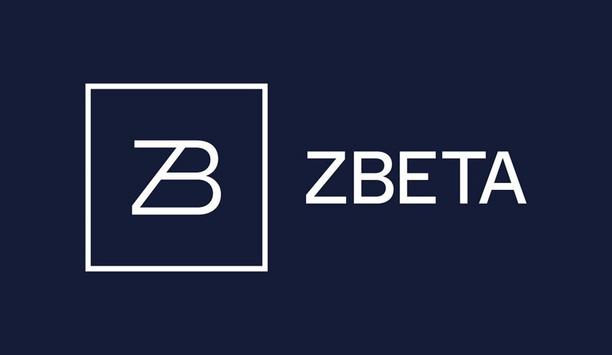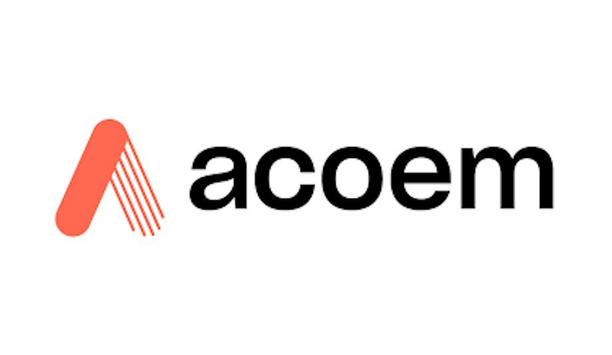Mobile Access Trends

Emphasising proactive rather than reactive security shifts the focus from dealing with crises and damage control to prevention. Advantages of a proactive approach include cost efficiency, better business continuity, and fewer crises that draw attention away from strategic improvements. Staying ahead of threats is a core mission of the security department, and technology has evolved to enable security professionals to deliver on that mission better than ever. We asked our Expert Panel Roundtable: How are security systems transitioning from reactive to proactive, and what is the benefit?

Multiple technology trends are transforming the physical access control market. There is a fundamental shift away from physical cards and keys toward digital identities — mobile credentials, digital wallets, biometrics, and cloud-native access platforms. These next generation access solutions are radically reshaping how buildings operate, protect staff, and perform functionally. At the same time, AI and analytics solutions are being layered onto these physical access control systems to support predictive threat detection and behavioural insights. Access data itself is becoming an asset for sustainability, space optimisation, and smart building initiatives. Risk, impact operations and experience The annual HID Global Security and Identity Trends Report highlights these and other issues The annual HID Global Security and Identity Trends Report highlights these and other issues. The survey cites improving user convenience as a priority for nearly half of organisations, while 41% are focused on simplifying administration, and 28% struggle with system integration. These are not theoretical challenges, they are day‑to‑day friction points that add cost, increase risk, impact operations and experience, and, of course, must be addressed. HID Global’s commercial focus HID Global’s commercial focus is to help organisations digitise their access control — with mobile identities, biometrics, and cloud platforms — and then to use the data to deliver more value. “We are turning access control from an operational cost into a software-driven asset that improves efficiency, supports Environmental, Social, and Governance (ESG) goals and even creates new revenue opportunities,” says Steven Commander, HID Global’s Head of Consultant Relations. The impact of digital transformation Digital transformation is the method of moving access control from hardware and physical credentials Digital transformation is in the process of moving access control from hardware and physical credentials to a software-driven, integrated experience. The transformation strengthens security while also improving user convenience — transforming the “pavement to the desk” journey. HID enables this shift through mobile credentials, biometrics, cloud-native platforms, and solutions that allow third-party applications to run on door hardware. “This helps customers turn access data into operational and commercial outcomes, while also improving the overall user experience,” says Commander. Digital transformation in access control is not focused on chasing the latest trends. Rather, transformation is about turning software, data and integration into outcomes that matter to customers, says HID. “Security becomes stronger and more adaptive,” says Commander. “Operations become simpler and more cost‑effective. Experiences become seamless and consistent. Sustainability moves from ambition to action. And the financial case becomes clearer as efficiencies are banked and new value streams emerge.” The challenge of futureproofing with long lifecycles Given that physical security technologies will be in place for 15 to 20 years, it is important to plan for how systems can evolve over time. Considering how rapidly security threats, compliance standards, and user expectations change, 15 to 20 years is a long time. The decisions made at the beginning of a system’s lifecycle can either limit flexibility later (which will be costly) or enable long-term adaptability. Support for open standards such as Open Supervised Device Protocol (OSDP) is therefore important Choosing products and platforms that are open, interoperable, and designed for updates can enable future-proof projects. Support for open standards such as Open Supervised Device Protocol (OSDP) is therefore important. In addition, systems built on open controller platforms — such as Mercury — enable organisations to switch software providers or expand functionality without replacing core door hardware. Architectural openness is key to system lifecycles and maximising the return on investment (ROI) from a chosen solution. Digital credentials and mobile access Flexibility and upgradeability should also be top of mind when it comes to endpoints like access control readers. While RFID cards are still commonplace, there is a clear trend toward digital credentials and mobile access. Readers that support both allow organisations to transition at their own pace, without committing to a full system overhaul. A long system lifecycle does not mean technology should remain static. Security, particularly cybersecurity, demands more frequent updates. Technologies that support firmware upgrades in the field extend the value of a deployment while helping organisations keep pace with emerging threats. In that sense, lifecycle thinking is not just about longevity — it’s about maintaining resilience and readiness over time. Applying biometrics and mobile identities Biometrics is becoming mainstream as a credential alternative, strengthening security without adding friction Biometrics is becoming mainstream as a credential alternative, strengthening security without adding friction. Many organisations are now deploying biometrics to support fast, seamless access journeys, with adoption already around 39% in access control according to HID’s recent research. In addition, 80% of organisations surveyed expect to deploy mobile identities within the next five years. Full technology integration enables tap‑to‑access without opening an app; the user journey becomes faster, safer, and more convenient. “It is where the industry is headed and we are at the vanguard of this,” says Commander. Ongoing challenge of cybersecurity At HID Global, cybersecurity is embedded into everything, from corporate processes and development practices to the solutions they bring to market. “Our approach ensures that customers can strengthen their overall security posture, not only by deploying secure products but by benefitting from HID’s commitment to the highest industry standards,” says Commander. HID holds multiple globally recognised certifications, including ISO 27001, ISO 14298, SOC Type 2 and CSA STAR, which demonstrate their robust information security and cloud security practices. In addition, HID’s SEOS® secure chipset is independently SEAL-certified, providing one of the most advanced levels of protection available on the market today. “Ultimately, this means organisations are not just purchasing isolated secure products; they are implementing solutions developed and delivered within a comprehensive, cybersecure framework,” says Commander. “When deployed according to best practices, HID solutions enable customers to achieve the highest levels of resilience against evolving physical and cyber threats.” Developing green and sustainable solutions A huge amount of waste is generated from the manufacture of plastic RFID access cards Digital credentials align with the sustainable solutions that everyone wants. A huge amount of waste is generated from the manufacture of plastic RFID access cards. Over 550 million access cards are sold annually. This creates 2,700 tons of plastic waste and 11,400 tons of carbon, based on a PVC card weighing 5 grams. Therefore, digital credentials self-evidently reduce the reliance on plastic cards (helping reduce carbon emissions by up to 75% according to HID’s research), while leveraging access control system data supports energy optimisation by shutting down or reducing systems in unused spaces. Energy use and CO₂ emissions can be cut dramatically, showing how access systems can contribute to sustainability goals and green building certification. What is the latest in smart buildings? Smart buildings increasingly rely on mobile access control as the backbone for digital services. Real-time access data enables new services such as automated room bookings, HVAC control, lift/elevator calling, e-bike hiring, and so on. Smart buildings increasingly rely on mobile access control as the backbone for digital services The financial upside is clear; smart, digitally transformed buildings can deliver around 8% higher yields per square foot versus traditional office space. Operational savings accrue from reduced administration, the removal of card production and shipping, and lighter IT support. This creates a value cycle — better experiences drive adoption, adoption fuels monetisation, and monetisation funds further improvements. Achieving technology impact in the real world One standout project is One Bangkok – a $3.9 billion mixed used development in Thailand – which demonstrates the scale of what can be achieved when access control data is used for optimisation, particularly when it comes to monitoring facilities usage and occupier behaviours. By switching lights off or lowering the temperature in unused rooms, for example, the One Bangkok building demonstrates this potential with a 22% reduction in energy consumption, saving 17,000 MWh and 9,000 tons of CO₂ annually. Sustainability is a key factor in contributing to how properties are valued. And sustainability extends far beyond digital credentials having a lower environmental impact than plastic cards. Buildings with recognised sustainability certifications often command rental premiums of around 6%, and three‑quarters of security decision‑makers now consider environmental impact in their procurement assessments.

ISC West 2025 in Las Vegas showcased the latest advancements in security technology, offering security professionals a glimpse into the future of the industry. This year's expo highlighted the growing influence of artificial intelligence (AI), cloud computing, and enhanced integration. The pioneering comprehensive and converged security event attracted nearly 29,000 industry professionals to the Venetian Convention Centre. Integration into unified platforms Several companies emphasised the importance of cloud-based solutions and the integration of diverse security components into unified platforms. For example, Brivo's Security Suite provides “everything in one platform” – not just access control. Customers only pay for what they use because the system is flexible and scalable from a single door to enterprise level applications. Brivo’s suite includes video, but the system can also tie in with third-party “partners.” Genetec's Security Centre allows for more frequent updates through the cloud. Milestone is undergoing a two-year transition to bring its Xprotect system into the future by incorporating Arcules and Briefcam into a video-as-a service product. Suprema introduced BioStar X, which integrates access control and video analytics into a single platform. AI and mobile credentials Axis Communications’ Cloud Connect product announced three new partnerships at ISC West 2025 Axis Communications’ Cloud Connect product announced three new partnerships at ISC West – Eagle Eye Networks, SecuriThings, and Wesco. They join the three partners announced during the first year of Axis Cloud Connect – Genetec, Kone (elevators) and Milestone. AI and mobile credentials were still hot topics at ISC West 2025, but the conversation has evolved beyond amazement at the technologies’ capabilities and now centres on more practical aspects. From the theoretical to the practical “AI and mobility are still the ‘flavors de jour,’ but messages are evolving to manifest AI for better outcomes,” says Heather Torrey, General Manager, Commercial Security, Americas, for Honeywell Building Automation. The company has reframed its security portfolio to be very building- and business-focused, continuing to grow and evolve after the recent acquisition of LenelS2. “From the theoretical to the practical, we want customers to be part of the conversation so we can deliver AI that is meaningful to them, focusing on what’s most important,” says Torrey. Under Honeywell’s new ownership structure, “each part of the business can be more focused on customers’ needs,” she says. Honeywell continues its journey around mobile access and credentialing and migrating to cloud solutions. Innovations in Access Control Gallagher’s new Quickswitch access control board simplifies the migration from legacy systems Access control remains a critical component of security systems, and ISC West 2025 showcased several innovations in this area. Acre is releasing “Gallery,” its version of the App Store for access control. DormaKaba is launching the Keyscan KC Series door controller with TCP/IP connectivity and enhanced features. Gallagher’s new Quickswitch access control board simplifies the migration from legacy systems. Johnson Controls highlighted its C-Cure command centre and C-Cure IQ web client, offering a unified approach to access control and video. Hardware integrations for security panels For service provider Alarm.com, hardware products prepare a path to greater customer experiences, says Abe Kinney, Alarm.com’s Director, Product Management, who oversees hardware integrations for security panels, sensors, video, etc., and drives new product development. “We are looking to bridge the physical world to digital world,” he says. “We want to bring an advantage to our dealers that they can bring to customers.” Because Alarm.com’s customers pay a monthly fee, the products must be durable and economical, says Kinney. “It should work with no need for truck rolls.” The importance of longevity and flexibility Products are evaluated based on features, price, and ease of installation Products are evaluated based on features, price, and ease of installation. In particular, longevity is important for the Alarm.com’s pro channel. There is also a growing emphasis on deterrence industrywide. Says Kinney: “We recognise that detection is part of it, but we need to prevent problems from happening in the first place. And the industry is re-evaluating.” When it comes to cloud intelligence, Eagle Eye Networks puts the emphasis on flexibility. They offer AI that can perform anywhere on the system infrastructure, on the camera, on their on-site bridge device, or in the cloud. They support their own AI and also any AI product from a third party. “We focus on what customers want from the data AI detects,” says Hans Kahler, Eagle Eye Networks’ Chief Operating Officer. Integration with other systems A timely alert from gun detection could save a life, but AI can also generate information that might be used and analysed later, such as point-of-sale information, dwell time, foot traffic, etc. “What people want is the ability to work with the data for business intelligence,” says Kahler. Integration with other systems provides new opportunities for customers: For example, a licence plate reader at a restaurant drive-thru could trigger customisation of the menu board digital signage based on the customer’s previous buying pattern. Relentless Innovation Assa Abloy handles more than 40 million SKUs for all its various brands, faked in 28 factories in the US Assa Abloy handles more than 40 million stock keeping units (SKUs) for all its various brands manufactured in 28 factories in the United States. Merely complying with regulations such as the “Buy American Act” is a monumental effort considering the massive product line, attendees heard at Assa Abloy’s Annual ISC West Breakfast focusing on compliance challenges in the security market. Meanwhile, back at the trade show booth, Assa Abloy focused on “relentless innovation” in every corner of its product line. Assa Abloy’s message: Innovation in security does not have to be about AI or automation. In fact, inventive approaches to products come in all shapes and sizes and at every level of the product portfolio, and innovation is happening faster than ever. For example, the Safebolt product from Securitech, a brand recently acquired by Assa Abloy, can quickly lock down existing doors with the press of a red button on a cylindrical or mortise lock. Temporary Systems to Secure Events Securing events is the focus of Allied Universal's Unified Command Solutions, which specialises in setting up temporary security systems for conventions, trade shows, festivals, construction sites, parades, and other events. They can add technology to situations where previously mostly security officers were used, providing safety/security and enabling more efficient event operation. “We can put cameras anywhere, whether they need power or not, use cell service or WiFi, a localised network or the internet, or whatever,” says Andrew LaMadrid, VP, Sales for Allied Universal's Unified Command Solutions. Event operation and management IDIS came to ISC West looking to leverage new products that they did not promote in the past The focus is on easy implementation, flexibility, and fast setup and removal. “We look for a solution to solve each customer’s pain points,” says LaMadrid. They specialise in setting up and deploying surveillance cameras for safety/security and for event operation and management. Mobile surveillance is a relatively new “piece of our puzzle” when it comes to protecting high-profile events. “People are excited about what we can offer that’s new,” says LaMadrid. Unified Command Solutions has been around for about 12 years and was acquired by Allied Universal last summer. IDIS came to ISC West looking to leverage new products that they did not promote in the past, and visitors were very interested in those solutions, says Scott Switzer, IDIS CEO. “The progression of our product line has been tremendous,” he says. Last year, the IDIS booth offered only basic analytics, but this year they had 30 different advanced analytics including gun and aggression detection using the advanced solution “IDIS Vaidio AI.” What Makes You Different? The most common question IDIS hears at their trade show booth is: “What makes you different?” The answer: They offer an end-to-end solution, including cameras; they manage, control, design from end-to-end; and there is no need for multiple integrations. The time needed to install an IDIS system is significantly less because of the simplicity. “We have customers we have supported and grown together for over 20 years,” says Switzer. The company previously deployed IDIS cameras under the Costar brand before the Korean IDIS brand was introduced into the U.S. (IDIS purchased Costar and changed the name to IDIS America.) “This has been a tremendous show for us; we are looking to build our momentum and let more people know about IDIS,” says Switzer. Managing real AI at the edge The depth of their metadata enables new applications, whether for security or business operations Based in Prague, Czech Republic, and with U.S. offices in Pennsylvania, FF Group provides licence plate recognition for harsh environments. Using Axis cameras, they offer “managed real AI at the edge,” selling through a nationwide distributed network, says Alex Osypov, CEO and Founder of FF Group. Markets include parking lots, cities/municipalities, police, government, water systems, etc. The depth of their metadata enables new applications, whether for security or business operations. They are looking to combine and correlate data including LIDAR, RADAR, etc. to exploit the advantages of “data fusion.” Osypov says: “The market is growing because we are involving other adjacent markets.” Unified platforms and advanced tools Several companies are focusing on enhancing security operations centres (SOCs) by providing unified platforms and advanced tools. Axon’s Fusus system “layers” onto existing infrastructure, tying together various sensors into a single interface for real-time monitoring and information sharing. Increasingly, enterprises have invested in a lot of technologies – ac, video, asset trackers – but none of it talks together. Fusus ties all the systems together so that operators no longer have to look at 10 different screens. Rather, there is a “single pane of glass” that shows everything and facilitates sharing of information with law enforcement. Motorola also showcased its Security Operations Centre, which integrates hardware, software, smart sensors, communication radios, and broadband devices to streamline incident management.

Physical security technologies are a prominent tool used by correctional facilities to provide a safe, secure, and controlled environment for staff, inmates, and the wider community. Among several functions, security technologies are used to prevent unauthorised access, to detect contraband, to monitor inmate movements and activities, and to protect staff. For security technology manufacturers, integrators and consultants, the corrections market presents distinctive challenges. We asked our Expert Panel Roundtable: What are the unique aspects of the corrections market, and how should the physical security industry adapt?
Latest Access control news

Allied Universal®, the world’s pioneering security and facility services provider, is one of America’s best workplaces for culture, belonging and community according to Newsweek. The news outlet’s 2025 list of America’s Greatest Workplaces for Culture, Belonging & Community features companies that prioritise culture, foster genuine belonging and build strong communities. Newsweek ranking “This honour is a reflection of the workforce we’ve built on teamwork, collaboration, and mutual respect,” said Allied Universal Global Chairman and CEO, Steve Jones. “We promote a workplace where every team member – no matter their background or experience – feels valued, included, and aligned with our core values.” The Newsweek ranking recognizes U.S. employers with more than 1,000 employees and is based on a national survey of over 2.7 million employee reviews and interviews, plus third-party analysis of leadership, integrity, compensation, and work-life balance.

ZBeta, a pioneer in delivering comprehensive physical security consulting services, now announced the addition of Jim McCormack as Learning and Development Manager. In this role, he will focus on building the company’s commitment to learning, technical excellence, and collaboration. McCormack will shape and oversee ZBeta’s learning and development initiatives, spanning onboarding, career growth, and knowledge sharing. His focus will be on creating programs that scale — helping new hires hit the ground running, supporting ongoing development, and deepening expertise across every corner of the company. Zbeta’s ongoing commitment “At ZBeta, our greatest asset is the collective knowledge and drive of our people,” said Anna Yates, Vice President of Talent and Culture, ZBeta. “Jim’s approach to learning and development will further strengthen our foundation and help us continue to set new standards for client service and performance, and further demonstrate Zbeta’s ongoing commitment to our people and our clients.” Developing talent and driving operational excellence Investing in people and growth sits at the heart of ZBeta’s mission. McCormack’s addition builds on this commitment and deepens its focus on developing talent and driving operational excellence. By nurturing a culture of ongoing learning, ZBeta is redefining what modern consulting means — forward-thinking, collaborative, and always striving to exceed client expectations. Evolving diverse learning, training, and quality programs A strategic and results-driven executive, McCormack brings more than 13 years of leadership experience designing, implementing, and evolving diverse learning, training, and quality programs across global organisations. His expertise spans the full learning lifecycle — from designing comprehensive training programs and implementing global learning management systems to driving leadership development and embedding Diversity, Equity & Inclusion principles into organisational cultures. Prior roles of McCormack Before joining ZBeta, McCormack served as Global Learning and Development Lead for SMB at Accenture, where he oversaw teams across six global locations and implemented standardised assets to foster collaboration and performance excellence. Previously, he held senior training leadership roles at Indeed.com, where he led the financial operations training strategy. McCormack is also the founder of RKW Training, a consultancy specialising in onboarding, management development, and learning strategy design. ZBeta’s focus on people “ZBeta’s focus on people and its culture of continuous learning and collaboration aligns perfectly with my passion for building educational and training ecosystems that empower businesses to grow and thrive,” said McCormack. “By focusing on capability building and knowledge sharing, we can elevate how our teams deliver for clients and for one another.”

March Networks®, a global pioneer in intelligent video surveillance, announces an expansion of its long-standing collaboration with Amazon Web Services (AWS), helping customers reduce long-term video storage costs by up to 80% over 5-years, by deepening its use of Amazon S3 Vectors and Amazon S3 Glacier to advance both video intelligence and cloud storage. Building on insights and discussions following AWS re:Invent 2025, March Networks is advancing its cloud strategy to bring together fast, scalable video search with cost-efficient long-term video storage. Reducing the cost and operational burden March Networks has relied on AWS for years to deliver secure, scalable solutions across its portfolio. Now, the platform uses Amazon S3 Vectors to power AI Smart Search, enabling natural language search across millions of video images, while Amazon Glacier supports a tiered cloud storage model built for high-volume video archives and long-term retention. By combining Amazon S3 Vectors with S3 Glacier-backed storage, March Networks helps customers find critical video evidence faster, while significantly reducing the cost and operational burden of storing video for compliance, investigations, and liability protection. This approach is already being adopted by large, multi-site enterprises with extensive video retention requirements. Long-term video retention requirements “Our customers need simpler, more cost-effective ways to meet long-term video retention requirements without compromising security and compliance – and we’ve just solved that problem,” said Peter Strom, President & CEO of March Networks. “By combining Amazon S3 Vectors for rapid video intelligence with S3 Glacier for cost-effective long-term storage, our partnership with AWS delivers a cloud model that simplifies infrastructure, scales instantly, and lowers total cost of ownership.” Expanded relationship with AWS Through its expanded relationship with AWS, March Networks delivers: Faster video investigations using natural-language search powered by Amazon S3 Vectors. Up to 80% lower video storage cost over five years using Amazon S3 Glacier-backed tiered retention. Enterprise-grade durability and resiliency through AWS-managed infrastructure. Instant scalability with no on-premises hardware to deploy or maintain. Hybrid flexibility for customers transitioning to the cloud at their own pace. The continued work with AWS also supports March Networks’ broader initiatives, including the adoption of AWS analytics, Amazon Bedrock to support advanced AI-driven services, and enterprise-grade reporting environments to help customers unlock greater value from their video data.

Genetec Inc., the pioneer in enterprise physical security software, highlights how modern, data-driven access control is becoming a strategic business priority for organisations in the Middle East, as they look to improve security, efficiency, and return on investment. For many organisations in the Middle East and beyond, access control has long been viewed as a necessary layer of security, providing a means to lock and unlock doors, restrict entry, and track who comes and goes. But in recent years, the role of access control has evolved. Modern access control systems The systems generate a steady stream of data that, when put to work, can deliver far more value than just securing doors. Modern access control systems are smarter, more connected, and capable of delivering measurable business value that goes far beyond physical security. When access control data is unified with other systems, such as video surveillance, HR databases, or business management systems, it can become a valuable source of business and operational insights. It can inform space planning, simplify compliance, reduce administrative overhead, and even reveal opportunities to save energy. Whether they manage facilities, IT infrastructure, or corporate security, modern access control offers a tangible return on investment (ROI). Turning data into operational intelligence Every badge swipe or door event creates data. When analysed, this information can help organisations understand how spaces are used and how people move through them. Dashboards and reporting tools built into a unified access control platform make it easier to visualise patterns and identify opportunities for improvement. These insights are valuable across many industries. In the Middle East, this can range from optimising cleaning and maintenance schedules in shopping malls and office towers, to improving people flow and staffing in hospitals, airports, and government service centres. The result is a system that not only keeps people safe but also supports better day-to-day decisions across departments. Saving time through automation Automation is one of the most immediate ways to boost ROI. Instead of requiring human intervention for every task, modern access control systems can trigger automatic responses based on predefined rules or “threat levels.” For instance, when the last employee badges out for the day, the system can put HVAC and lighting into energy-saving mode. When the first person badges in the next morning, alarms can automatically disarm. Event-based scheduling can also make life easier during special activities. In a multi-tenant facility, elevators can be programmed to require credentials only after business hours. Automation also simplifies compliance. If an employee’s certification expires or a background check lapses, access can be automatically suspended until the records are updated. This helps organisations meet regulatory requirements without the need for additional paperwork or manual oversight. Streamlining operations and user management Legacy access control systems often rely on manual updates and disconnected tools. That can slow down onboarding, increase administrative work, and create inconsistencies that put security at risk. Modern access control systems bring all cardholder management into a single interface. Temporary credentials for contractors can be issued automatically based on their responsibilities and revoked when contracts end. When employees leave, their access rights can be removed immediately when HR updates the database. Reduce the risk of outdated permissions The same infrastructure can support mobile credentials, biometrics, or role-based access rules that adjust automatically as employees change departments. These access rules reduce the risk of outdated permissions while minimising help-desk requests and badge printing costs. And because a unified system ties together access control, video, and intrusion detection, operators can respond faster to alerts Flexibility that protects long-term investments Budget is often the biggest concern when upgrading access control infrastructure. Yet postponing modernisation can end up costing more. Legacy systems are often built on proprietary technology that limits compatibility with third-party devices and makes repairs or expansions difficult. Modern, open architecture systems offer a better path forward. They give organisations the freedom to choose from a broad ecosystem of hardware and integrations, extend the life of existing investments, and avoid being locked into a single vendor. This approach provides technical and financial flexibility, ensuring systems can adapt as needs change. Advantage of automatic updates Deployment choice is another way to protect value. Some organisations prefer to keep their systems entirely on-premises. Others move certain functions to the cloud to reduce maintenance and take advantage of automatic updates. With flexible deployment options, teams can modernise at their own pace, reuse existing infrastructure, and decide which workloads make the most sense to move to the cloud. Building a foundation for future growth Access control systems are becoming central to how organisations manage not just security, but also daily operations. A unified, data-driven approach helps break down silos between departments and creates a shared source of truth. For facilities teams, that might mean more efficient use of space and resources. For HR, it means accurate attendance data and smoother onboarding. Cybersecurity posture and simplified maintenance For IT and security, it means a stronger cybersecurity posture and simplified maintenance. When all these functions work together, the ROI becomes clear: lower operating costs, greater visibility, and improved user experience. For organisations in the Middle East, modern access control is therefore not only about protecting people and assets, but also about supporting national and regional ambitions around smart cities, sustainability, and world-class visitor and employee experiences.
Access control applications

As a pioneering energy supplier with a large software development practice, the client was spinning a lot of plates. Looking to streamline its software delivery process, the company targeted tooling as a potential area for improvement. With a huge number of software engineers working across the organisation, tool sprawl had become a major issue. Tool proliferation was creating several challenges that were slowing down the SDLC, including: Increased costs: Each team was paying for tools independently, leading to duplicated expenses and unnecessary costs. Reduced productivity: The disorderly range of tools created a steep and unpredictable learning curve for engineers, adding to their cognitive load and impacting productivity. Limited control: Without standardisation, the company found it difficult to enforce software delivery practices, resulting in a higher cost-of-change and complex implementation. Visibility gaps: Dispersed tools meant limited insight into overall engineering efficiency, software quality, and other key performance indicators. To address these issues, the company sought to roll out a standardised, simplified toolset for all development teams and reached out to RiverSafe for support. The solution RiverSafe worked with the organisation to move them from a decentralised, multi-tool environment to a standardised, enterprise-level toolset. This new, cohesive platform featured accessible repositories, security scanning tools, and testing tools—all of which were made available across every engineering team. Key elements of the solution included: Standardised tooling across teams: By standardising the toolset, the organisation can ensure that all teams are using the same set of approved tools. This also makes tools more accessible and user-friendly, and helps new engineers get up to speed with tools quickly. Better data visibility: These newly centralised tools allow the organisation to gather comprehensive data, allowing business leaders to closely monitor engineering performance metrics. This enhanced visibility means teams can now analyse lead times from code commits to production, identify bottlenecks, and gain insight into the maturity of their DevOps practices. Streamlined processes and governance: With a unified platform, the organisation can introduce uniform standards for processes to improve its products—a new pull request approval process, for example, began improving code quality immediately. Being able to implement these standards at the enterprise level, as opposed to among individual teams, has simplified change management and reduced governance challenges. The results The standardisation effort has already brought significant benefits to the company and its engineering teams, including: Cost savings: By eliminating licenses and reducing the need for multiple tools, the company now saves around £4 million every year. The streamlined toolset has also reduced spending on maintenance and duplication of other costs. Improved engineering performance: With full visibility into engineering processes and clearer performance data, the organisation has been able to identify opportunities for improvement and fine-tune processes. By reducing tool sprawl, engineers can now focus on developing software instead of adapting to or switching between different tools, reducing workload and boosting their productivity. Reduced change costs: By consolidating all pipelines into one tool, the organisation minimised the complexity of future upgrades. With a single pipeline model, changes can now be rolled out at one central point rather than across multiple tools, lowering the cost of engineering efforts. More informed decision-making: Having access to a centralised source of data means the company can make informed decisions about which tools to retain or retire. The standardised approach has also eliminated time-sucking “tool holy wars,” where team members would promote the use of their preferred tools, as the choice is made at the organisational level. Data-driven insights: Achieving full visibility into their practice has empowered the organisation to measure engineering maturity and pinpoint improvement areas. Leadership can now assess metrics like commit lead times and engineer performance so they can make smarter decisions about resource allocation and planning.

ANSecurity, a pioneering specialist in network security and wireless solutions, has successfully delivered one of the UK education sector’s first campus-wide Wi-Fi 7 deployments at Sir William Perkins’s School, providing the Surrey-based independent school with a secure, high-capacity wireless infrastructure designed to support its growing digital learning ambitions. Serving around 580 students and 142 staff, Sir William Perkins’s School has fully embedded 1:1 iPad usage into daily teaching. However, the school’s legacy wireless network struggled to cope with the rising density of devices, particularly when large groups connected simultaneously through Apple Classroom. Technical requirements Ensuring secure authentication, safeguarding compliance, and consistent performance across hundreds of devices became increasingly challenging – and other vendors were unable to meet the school’s strict technical requirements. “We spoke to multiple providers, but none were able to implement the solution we envisioned. ANSecurity not only made it possible – they tested it, validated it, and delivered it flawlessly,” said the school’s IT Manager. A structured, consultative approach Introduced by RUCKUS Networks, ANSecurity began by validating the school’s design requirements and conducting extensive lab testing to confirm compatibility with Jamf School’s certificate-based authentication and the school’s existing network architecture. A collaborative deployment plan followed, with a tight three-month schedule carefully aligned to the school holidays to avoid disruption. ANSecurity then deployed RUCKUS Wi-Fi 7 access points and configured Cloudpath to seamlessly issue certificates to nearly 550 school-managed iPads – a capability other vendors could not match. Wi-Fi 7 provides dramatically higher throughput, lower latency, and improved efficiency thanks to technologies such as wider channels and multi-link operation, enabling fast, reliable connectivity even in dense device environments like classrooms. ANSecurity integrated RADIUS and API-driven workflows To support safeguarding and compliance, ANSecurity integrated RADIUS and API-driven workflows to ensure accurate user-to-IP mapping across both the Palo Alto Networks next-generation firewall and the ContentKeeper filtering service. Additional networks were created for BYOD and guest access, with Opportunistic Wireless Encryption (OWE) used to protect traffic on open networks. ANSecurity also assisted in restructuring parts of the network, implementing new VLANs and applying updated firewall policies to ensure the right users and devices could securely access the right resources. Following deployment, a detailed wireless site survey was carried out to confirm optimal signal strength, signal-to-noise ratio, and throughput across both indoor and key outdoor areas of the campus. “The difference in consultative support compared to other vendors was night and day,” said the IT Manager. A high-performance, future-ready outcome The school now benefits from fast, stable, and secure Wi-Fi coverage across the entire campus. The new network reliably supports nearly 800 devices, with the majority operating seamlessly on 5 GHz, and is fully prepared for future upgrades, including WPA3 and 6 GHz Wi-Fi once supported by Jamf School. Integration with existing security solutions ensures all safeguarding, logging, and compliance requirements are met. Improvements to switching, segmentation, and overall network architecture have further enhanced performance and manageability. Cyber Essentials Plus certification Delivered within the agreed three-month window, the project positions Sir William Perkins’s School at the forefront of digital education. Wi-Fi 7 provides the performance headroom needed to support emerging educational technologies – from AR/VR learning to high-bandwidth cloud applications – ensuring the school remains ahead of future digital demands. With upcoming initiatives including Cyber Essentials Plus certification, expanded security controls, and wired network access control, the relationship between the school and ANSecurity continues to deepen, built on trust, technical expertise, and a shared commitment to innovation.

ZeroEyes, the creators of the first AI-based gun detection video analytics platform to earn the full US Department of Homeland Security SAFETY Act Designation, announced now that Ki Charter has expanded its contract following initial success. ZeroEyes’ proactive gun detection and intelligent situational awareness solution will now be deployed across the school’s San Marcos campus. Largest residential treatment centre Ki Charter is the premier educational provider for students who reside in residential facilities (RFs) and day centres across Texas. The school serves over 6,500 students annually (500% mobility rate) with a dedicated team of educators and staff. The San Marcos campus is located within the 65-acre San Marcos Treatment Centre, the largest residential treatment centre in Texas. The centre houses approximately 200 residents (and community students) who attend Ki Charter, and employs 425 staff members, including 50 from Ki and 375 from the San Marcos Treatment Centre. Level of real-time awareness “At Ki Charter, we serve a unique population of behaviourally challenged students, so our approach to security has to be comprehensive, proactive, and intentional,” said Dr. Jerry Lager, Superintendent of Ki Charter. “Our Safety and Security Committee, campus teams, mental health staff, and local law enforcement all play a role in preventing and de-escalating potential threats, but ZeroEyes added a level of real-time awareness we simply didn’t have before. After seeing how effective the technology was, expanding its use was an easy decision.” ZeroEyes' AI gun detection ZeroEyes' AI gun detection and intelligent situational awareness software layers onto existing digital security cameras. If a gun is identified, images are instantly shared with the ZeroEyes Operations Centre (ZOC), the industry's only U.S.-based, fully in-house operation centre, which is staffed 24/7/365 by specially trained U.S. military and law enforcement veterans. If these experts determine the threat is valid, they dispatch alerts and actionable intelligence — including visual description, gun type, and last known location — to law enforcement and local security teams as quickly as 3 to 5 seconds from detection. Multi-layered safety program “Ki Charter has built a thoughtful, multi-layered safety program, and we’re proud to continue to play a role in strengthening it,” said Mike Lahiff, CEO and cofounder of ZeroEyes. “Their leadership is deeply committed to protecting students and staff, and this expansion proves that they understand that proactive security is essential on a campus of this size and complexity.”

Acoem, a pioneer in advanced physical security solutions, announced that a large North American utility is utilising its ATD Gunshot Detection system to protect critical infrastructure at multiple sites across the country. Over the past few years, utilities across the United States have faced a troubling trend: gunfire directed at electrical substations and other energy assets. Whether the intent is vandalism, sabotage, or reckless target practice, the results are the same. A single rifle round can destroy a million-dollar transformer that could take months to replace. This happens when the cooling fluid drains from the transformer. Once the fluid is lost, the unit quickly overheats and frequently ignites. Physical attacks on critical infrastructure A recent DHS Homeland Threat Assessment concurs, stating, “We assess that domestic and foreign violent extremists will continue to call for physical attacks on critical infrastructure in furtherance of their ideological goals…” One of the largest electric power and natural gas utilities in North America recognised this risk after a number of gunshot attacks on substations disrupted power to tens of thousands of customers. In one case, power was not restored for days, and a person dependent on life support equipment tragically lost their life. The challenge Before implementing a new solution, the utility needed to reassess how its security technologies worked together. Traditional security cameras were excellent for documenting clearly visible problems, but they could not reliably detect something as small as a bullet hole in a damaged transformer, leaving a critical awareness gap. The company’s challenge was not only detecting a gunshot but doing it fast enough to act before cascading failures occurred. Threats outside the perimeter In many cases, gunfire at substations originates from hundreds of feet outside the fence line. The sound of the muzzle blast may never reach the site, leaving only the supersonic ballistic wave as evidence of incoming rounds. A system limited to triangulating muzzle blasts within a perimeter would miss these long-range threats entirely. Integration with security cameras and VMS Facing these unique requirements, the utility sought a technology that could provide instant notification with video and audio verification. This capability was essential to confirm whether an event was malicious or accidental. Integration with the utilities existing video management system (VMS) was a requirement, while direct control of a pan-tilt-zoom (PTZ) camera would allow operators to focus immediately on the source of the gunfire and determine if an actual threat existed. "We needed immediate, accurate alerts to prevent catastrophic damage,” said the utility’s physical security program manager. “Whether a threat is close-range or from a high-powered rifle fired from hundreds of feet away, we needed a modern, self-contained, highly accurate system to provide a full picture.” The requirement of a closed, secure network Cybersecurity was another defining requirement for this utility. The company prohibits internet connectivity within its operational network, a strict “air-gapped” policy that rules out any cloud-based system. For these secure environments, any new security technology must operate entirely on-premises, integrating directly with existing video and access control platforms. Finding the correct solution To address the complex nature of the threats and meet these stringent demands, the utility required a specialised solution that avoided a full infrastructure overhaul. After extensive testing, the utility selected Acoem’s ATD (Acoustic Threat Detection) system. The company has now deployed numerous detection systems across multiple states and regions, with new installations continuing every week as part of an ongoing modernisation plan. A principal reason behind choosing the Acoem ATD system was based on how the system works compared to legacy solutions. Instead of sending audio data from multiple sensors to a remote server, the Acoem sensor processes detection right on the device. When a gunshot occurs, it detects both the muzzle blast and the ballistic wave, confirming the event and calculating its location instantly. Cybersecurity requirements of restricted internet access Processing analytics on the edge is instant and gives operators the time they need to respond. That might mean rerouting power, isolating a substation, or taking a transformer offline before it fails. Having that situational awareness can make the difference between a quick repair and an extended regional outage. Acoem developed an on-premises version of its Cadence software specifically to meet the utility’s cybersecurity requirements of restricted internet access. The platform displays live maps, sensor health, and provides audio verification clips that allow operators to hear what the sensor heard while viewing the shooter’s position overlaid on the map. Cadence integrates directly with the utility’s Avigilon video management system. “Running software on-premises was non-negotiable,” said the utility’s program manager. “We needed the benefits of automation and analytics without exposing operational systems to the internet.” Situational awareness with eyes on target Detection is only half the story. Integration with a PTZ camera on site provides immediate visual confirmation. When a gunshot is detected, the sensor automatically commands the camera to pivot to the coordinates of the source. Operators can see what happened as it happens, even if the shooter is several hundred yards outside the fence line. In some locations, thermal or infrared cameras may complement the acoustic sensors to detect movement in tree lines or along rights-of-way. This pairing of acoustic and visual intelligence transforms response operations, allowing the utility security team to verify alarms in real time and coordinate with law enforcement or maintenance crews as needed. Hunters or vandals? In one recent example, the utility’s Acoem ATD system detected gunfire at a remote substation. Through the linked PTZ camera, operators quickly confirmed that the shots came from hunters outside the perimeter and that there was no threat to equipment or personnel. The team was able to assess the situation instantly without dispatching crews or contacting law enforcement. Scalability and integration flexibility The utility required open standards and interoperability. They did not want a proprietary system that locked them into a specific platform. The Acoem ATD system met that demand, integrating through APIs with their existing Avigilon infrastructure. Whether a site runs on VMSs such as Avigilon, Milestone, or Genetec, the ATD sensors connect seamlessly within the same ecosystem. Just as important, the solution had to scale. The utility began with a few high-risk sites and has expanded steadily without redesigning its network. This “start small, grow fast” approach aligns with how the organisation evaluates, validates, and then standardises new technologies. CIP-014 compliance and beyond The North American Electric Reliability Corporation’s CIP-014 standard mandates physical security measures for critical transmission substations, including threat detection. The utility wanted to go further. It set a new benchmark for awareness, resilience, and uptime. Acoustic threat detection is now a key component of its operational strategy, providing actionable intelligence that prevents damage rather than documenting it after the fact. A smarter path forward Protecting critical infrastructure today means recognising that not every threat is digital. A single bullet can cause as much disruption as a cyberattack. The key is giving operators the real-time data they need to act quickly and decisively. By combining edge-based AI, on-premises software, and open integration with existing security systems, Acoem’s ATD system has given the utility company the situational awareness it needed to protect its assets and its customers. The system keeps vital equipment online, strengthens compliance, and helps safeguard the communities that rely on uninterrupted service. “Securing the grid now demands both digital and physical vigilance,” said the utility’s program manager. “Gunshot detection has become a critical layer of defense for the infrastructure that powers our daily lives.”
Intersec Dubai 2026 news
RecFaces, a global developer of ready-made facial recognition software solutions, is pleased to announce its participation in Intersec 2026, one of the world’s pioneering security, safety, and f...
Dubai World Trade Centre — Sheikh Saeed Hall 2, Stand C43, January 12–14, 2026. Organisations of every size and type have discovered how connected digital access helps them implement smart...





